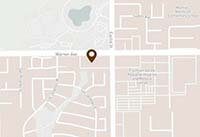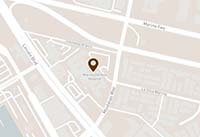Gastric Sleeve Risks
While gastric sleeve surgery is thought to be a safe and effective procedure to achieve weight loss, it’s important to know that, as with any surgery, there are significant risks to take into account.
One of these risks is that the portion of the stomach that is left may increase in size due to stretching over time, which could cause weight gain. Another risk is that the remaining stomach, referred to as a sleeve, may shrink which can cause a significant amount of vomiting after eating. It’s also very important to take into consideration that the gastric sleeve surgery is permanent and non-reversible. Complications may arise during or after surgery such as a hernia, infection of the wound, or having a blood clot.
The mortality rate for the gastric sleeve surgery is .08%, which is less than 1 person out of 1000.
While complications can occur at any time, the most serious ones occur within the first two weeks after surgery. These complications can include:
STAPLE LINE LEAKS
This complication is the most significant and serious one. This occurs when the newly formed stomach leaks because of an issue in the way the stomach is stapled and sewn shut. Symptoms of a staple line leak include fever, increased heart rate and difficulty or altered breathing. If you notice any of these symptoms you should call your doctor right away.
The risk of having a staple line leak is about 2.4%
The way that a staple line leak is treated differs depending on how far out from surgery you are. If it has been 3 days or less, then the surgeon with go back in to find out what is going on in a procedure called exploratory laparoscopy. When the leak is found, it is then surgically repaired. A feeding tube is then installed into the small intestines.
However, 8 days after surgery or more, surgery is usually not performed because of the inflammation process that occurs post-surgery. The surgeon will instead drain the leak, put in a stent and then install a feeding tube. In the case that a patient is not stable, only then would surgery be performed so the surgeon can drain the area and wash it out. The leak would then be repaired, but if the surgeon is unable to, they will medically manage the leak instead.
BLOOD CLOTS (THROMBOSIS)
Developing a blood clot after surgery could be fatal if they are not treated soon. Dr. DavidDavtyan is well aware of this risk and takes extra precautions to limit the chances of getting a blood clot. Blood clots sometimes form because of a lack of movement after surgery. Typical symptoms to look out for in your arms or legs are redness, welling, pain, loss of sensation, pale color in the affected limb, paralysis. Because blood clots can cause a heart attack, stroke or death, it is important to call your doctor right away if you experience any of these symptoms. It’s important to know that there is a bigger risk associated with blood clots developing in smokers.
The risk of developing a blood clot, also known as a deep vein thrombosis, is under 1%.
Treatment of a blood clot may either consist of surgical removal or injection of medicine directly into the clot to dissolve it.
STRICTURE
A stricture occurs when inflammation in one of the openings of the stomach causes a blockage, not allowing food to pass properly.
Strictures are either something that becomes an ongoing problem post-surgery or that suddenly appears.
Typical symptoms to look out for are nausea/vomiting, difficultly swallowing and/or food intolerance.
The risk of developing a stricture is 3.5%, however it is treated relatively easily. Depending on when the stricture occurs and how bad it is, it can either be treated with simple rest and an IV with fluids or with a dilation done endoscopically. In rare cases, the stricture may cause a physician to have to convert the sleeve to a gastric bypass.
INFECTION OF THE WOUND SITE
As with any surgery, the incision site/s may become infected. Symptoms to look for include fever, redness at the incision site, increased heart rate, dizziness/lightheadedness, the feeling of heat at the incision site.
The risk of developing an infection of the wound site is common as it occurs in 10%-15% of cases.
Infections are treated with antibiotics. In some cases the wound will also have to be washed.
LONG TERM COMPLICATIONS
Here are some possible long term complications that may occur with gastric sleeve surgery:
Nutritional deficiencies
Some symptoms to look out for include pale skin, hair loss, lightheadedness, constipation, menstrual issues, inability to concentrate.
The risk of developing nutritional deficiencies after gastric sleeve surgery is 12%
Treatment for this complication include supplements, change in diet, and getting blood work done every 3 months to stay on top of it.
Gallstones
Another common complication after gastric sleeve surgery are gallstones, which occurs in approximately 23% of patients within the first two years post surgery.
The typical symptoms are pain in the upper abdomen and upper back, nausea, vomiting, bloating, indigestion, heartburn and gas.
Treatment for this complication is a relatively simple and straight forward surgery.
GERD (heartburn)
This complication is common after gastric sleeve surgery as well as other weight loss surgeries. The risk of developing GERD after surgery is 47%. Most cases are treated with medication (proton pump inhibitors), although chronic cases may require surgery.
During the initial consultation, Dr. David Davtyan will go over all of the risks with you to make sure you have all the information you need to make an informed decision.
SCHEDULE A COMPLIMENTARY CONSULTATION
return to Gastric Sleeve Candidatescontinue to Gastric Sleeve Results





